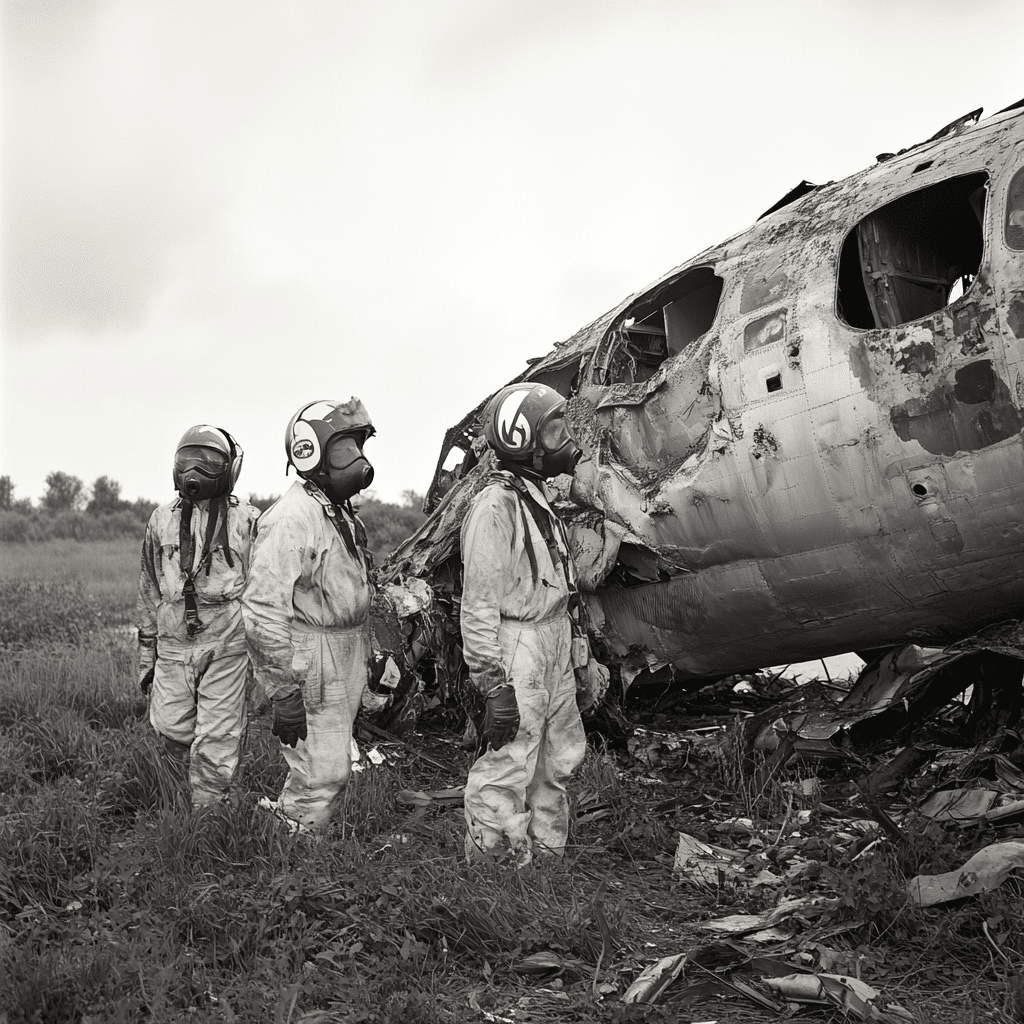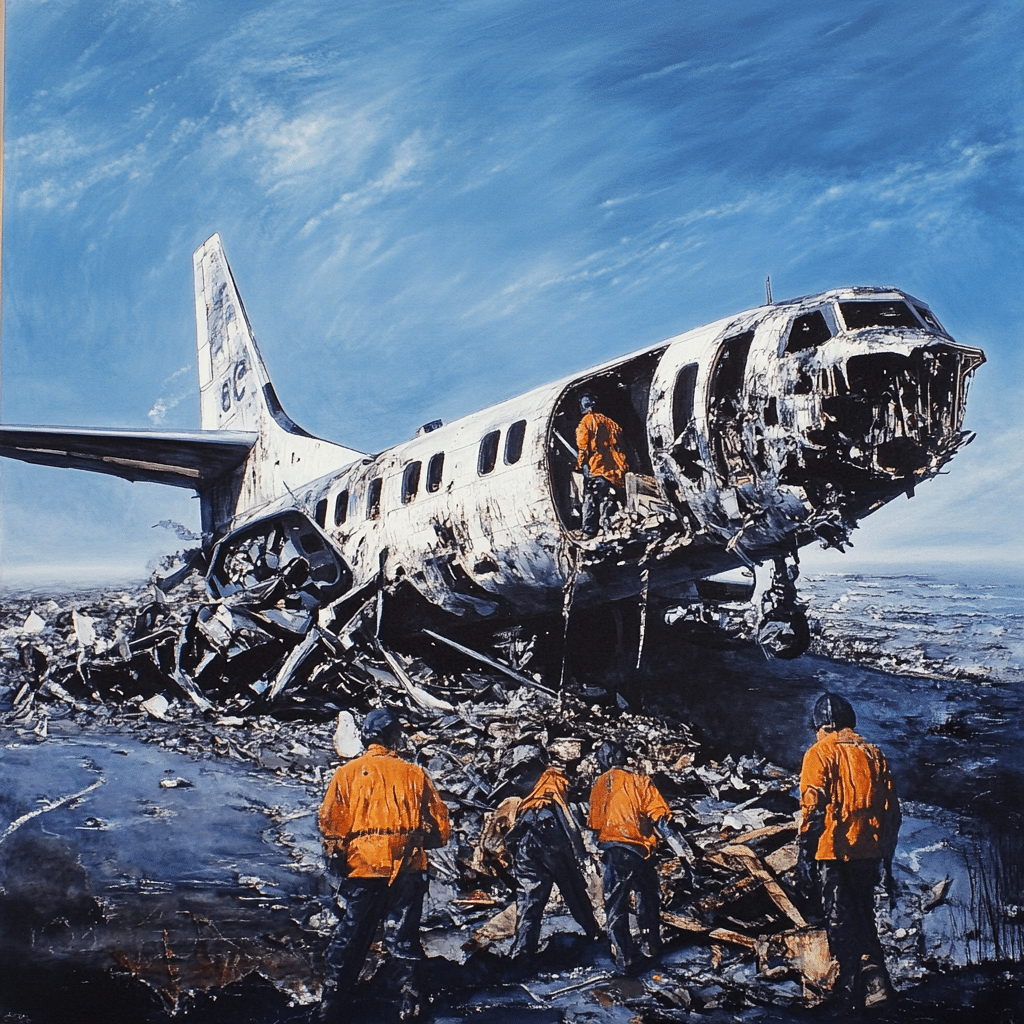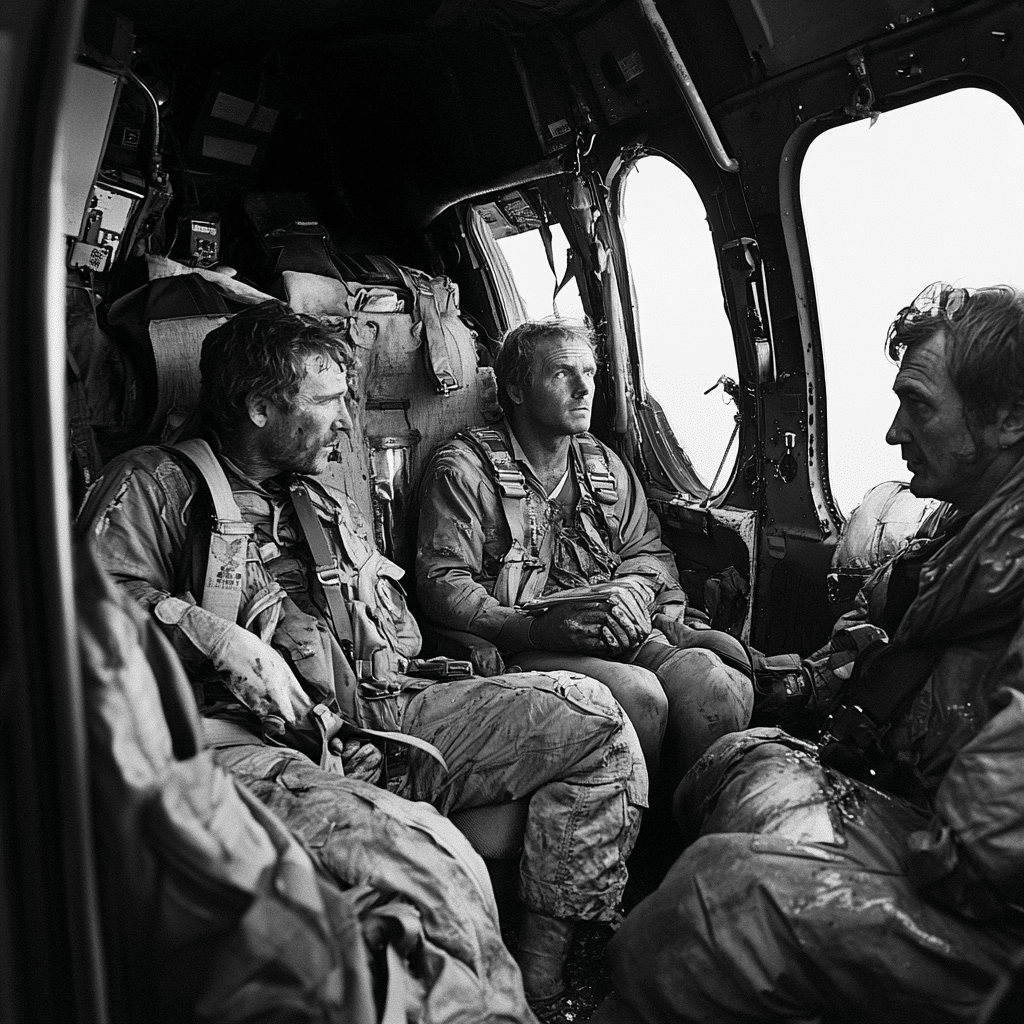
## 1972 Plane Crash Survivors Share Their Incredible Story
In October 1972, tragedy struck when a Uruguayan Air Force Fairchild FH-227D, carrying 45 souls, crashed into the unforgiving Andes Mountains. The flight, intended to transport players from the Old Christians Rugby Club and other passengers from Montevideo to Santiago, met severe weather that led to its catastrophic failure. Only 16 survivors emerged from the chaos, facing unimaginable trials as they fought not only for survival but for the very essence of human spirit.
The Crash: A Fateful Day in the Andes
In the moments leading up to the disaster, the pilots struggled with deteriorating conditions. Thick clouds obscured visibility; an ill-fated mix of snow and ice blanketed the terrain. When the plane finally went down, its remnants scattered across a remote area, leaving survivors in a harsh, frozen wasteland, cut off from civilization.
Survivors like Fernando Parrado, who later emerged as a beacon of hope, recounted the immediate aftermath. “We felt a jolt, and then silence.” Amid fading consciousness and a deepening chill, they awoke to the reality of their predicament. With no supplies, no clear path to safety, and just each other, they faced an overwhelming fear. The isolation was daunting, yet ignited a spark of resilience within them.
A Fight for Survival: The First Rescues
As days turned into a week, the survivors quickly turned their focus toward survival. They searched for food among the wreckage while maintaining hope. The biting cold and the hunger gnawed at their spirits. When options ran thin, tough decisions ensued. They faced a moral quandary—their only source of sustenance lay in the deceased. The controversial choice to resort to cannibalism emerged as a desperate measure for survival, forging a bond of shared suffering among them.
This choice was not easy. The emotional weight hung heavy; each meal was steeped in anguish. Survivors grappled with guilt while battling their hunger, leading to a profound ethical dilemma that tested their views of humanity.
The Role of Rescue Missions
Meanwhile, the world’s eyes were on the missing flight, as search efforts commenced across Bolivia and Argentina. The search was fraught with mistakes and miscalculations. Poor weather conditions and the unforgiving terrain made it hard for rescuers to pinpoint the crash site, causing anxious relatives to hold onto fading hope.
Rescue teams faced challenges too. The altitude slowed their efforts. The survivors waited, bundled in the wreckage, as days turned to weeks. Finally, on December 20, 1972, rescue planes spotted the survivors, and their long ordeal came to an end. Only then did the real story of the 1972 Andes plane crash survivors come to light—a tale of endurance and unwavering human spirit in the face of adversity.

Lessons from the 1972 Andes Plane Crash Survivors: Survival and Solidarity
The tale of the 1972 Andes plane crash survivors resonates beyond just survival; it speaks volumes about community and solidarity. Their journey underscores the importance of collaboration and trust when confronting dire situations.
The Power of Community: Bonding Under Pressure
As they faced adversity, bonds formed among the survivors. Each person brought unique strengths and perspectives to the table, guiding them through emotional and physical struggles. Personal narratives reveal heart-wrenching moments of support and companionship. “We became like a family,” Survivor Eduardo Strauch said. “Through the darkest times, we held each other up.”
The shared ordeal fostered deep connections. They celebrated small victories together—finding food or shelter became communal triumphs. This spirit of kinship offered them a powerful source of hope where individual despair could have easily taken root.
Mental Fortitude: Psychological Impacts of Trauma
The psychological consequences of such an intense ordeal were profound. Survivors faced ongoing battles with trauma long after their return to the world outside. Parrado, who emerged as a motivational speaker, shared the transformation that arose from such harrowing experiences. His story revealed pivotal lessons in resilience and mental fortitude—a testament to the ability to heal amid disquieting memories.
Many survivors experienced PTSD and struggled to readjust to normal life. See, trauma doesn’t fade; it weaves itself into the fabric of daily existence. Even years later, they reflected on their experiences, seeking closure and meaning.
How the Legacy of the 1972 Andes Plane Crash Affects Aviation Safety Today
The tragic lesson of the Andes flight disaster hasn’t been lost on the aviation industry. Changes sparked by this event continue to influence protocols and practices, ensuring safer skies for all.
Evolution of Aviation Safety Protocols
In the wake of the crash, aviation regulations shifted significantly. Training for pilots intensified, particularly in crisis management and emergency procedures, safeguarding against similar missteps in the future. The lesson from the 1972 Andes plane crash survivors became a clarion call for a more structured and rigorous approach to aviation safety.
Airlines began emphasizing crew resource management (CRM), enhancing communication and teamwork among flight crews. This heightened awareness ensures they’re better equipped to handle emergencies, thereby fostering safer travel experiences.
Technological Advances in Aviation
Technology moved forward at an impressive pace following this disaster. Newer navigational systems and communication methods emerged, designed to prevent accidents and provide real-time data to pilots. Innovations such as automated terrain awareness systems became standard to ensure that pilots have access to vital information, limiting human error and enhancing safety protocols.
With each advancement, the shadow of the 1972 Andes plane crash survivors serves as a grim yet powerful reminder. Through their ordeal, they catalyzed a shift towards a more fortified aviation landscape, aiming to protect future travelers.
Boeing Plane Crashes: A Study in Safety
Looking back, Boeing planes have been connected with several notable crashes, painting a complex picture of safety in aviation history. The 1972 Andes disaster, while devastating, prompted significant evaluations of safety practices.
Case Study: The Boeing 727 and its Safety Record
The Boeing 727 was part of the fleet involved in several unfortunate incidents, including the infamous crash mentioned above. The company and regulatory bodies have worked continuously to scrutinize safety records and improve upon designs, ensuring passenger safety is paramount.
The evolution in aircraft design since 1972 illustrates Boeing’s commitment, with modern planes integrating robust safety systems and materials. Enhanced training for pilots and crew continues to be essential, especially after the scrutiny surrounding the Boeing planes explosion incidents that have occurred over the years.
Aviation Tragedies: Lessons Beyond the 1972 Andes Plane Crash Survivors
Taking a broader perspective, we can learn from the narratives surrounding various aviation tragedies. Their experiences invite comparison and examination of safety protocols and human response in crisis situations.
The Boeing Plane Explosions: Investigating Reasons and Responses
Incidents like the tragic Boeing plane explosions have raised serious questions about the regulations governing air travel. Analyzing these catastrophic events reveals common threads; many stem from a breakdown in communication or a failure to adhere to safety procedures.
Survivors of such escapades share harrowing experiences, leading to a deeper understanding of the consequences of technological failures and human errors alike.
Apache Helicopter Crash in Alabama: Another Tale of Survival and Recovery
Similar to the Andes disaster, the Apache helicopter crash in Alabama showcased human endurance in the face of calamity. Survivors recounted rapid decision-making and leadership in chaotic moments, echoing the sentiments of the 1972 Andes plane crash survivors.
Their stories further illustrate the universal themes of survival, bonding, and recovery. Both stories stand as potent reminders of the resilience found in humanity when confronted with adversity.
A Legacy of Hope and Adventure
Reflecting on the journey of the 1972 Andes plane crash survivors, we see an intricate tapestry woven from tragedy, survival, and eventual triumph. Their experiences not only shaped aviation policy but also offered profound insights into the human spirit’s capacity for resilience.
As communities reflect on these stories, we learn that hope prevails even in the harshest conditions. The legacies of those who persevered continue to inspire, encouraging us to invest in our connections with one another and cherish the strength we derive from community. The invaluable lessons learned through their extraordinary journey remind us that we all possess an innate ability to rise above challenges, showcasing the formidable nature of the human experience.
Through the lens of tragedy, the 1972 Andes plane crash survivors illustrate a path not just towards survival but towards understanding the depth of solidarity, mental endurance, and the power of shared stories that continue to shape our collective humanity.
1972 plane crash survivors: Unbelievable Tales of Endurance
A Gripping Incident
In 1972, a tragic plane crash left a group of survivors facing unimaginable challenges in the Andes. Little did they know that their tales of survival would inspire countless others. Remarkably, these 1972 plane crash survivors taught us that resilience and faith could help one endure the toughest of situations, echoing the same spirit seen in sports during intense events like the Nhl trade deadline. Just as players strategize to turn the odds in their favor, these survivors had to tap into their inner strength when every moment mattered.
Unity in Adversity
The survivor’s bond formed in those dire circumstances is a testament to the power of companionship. Instead of succumbing to despair, they banded together, showcasing incredible teamwork. Their experience resonates with fellow survivors of different challenges, like the many people seeking answers about issues like Does Suboxone get You high. Interestingly, their story also draws parallels with real-life tales of leadership, much like how actors such as George Mackay shine in leadership roles on screen, captivating audiences with their emotional range.
What Makes a Hero?
These 1972 plane crash survivors exemplify what it means to be a hero: relentless courage, hope, and the refusal to give up. They remind us that heroes come in all shapes and sizes, just like the popular figures we cheer for, whether it’s athletes like Javier Baez lighting up the baseball diamond or everyday people quietly making a difference. Their stories help us reflect on the importance of resilience and community, and in a day when we celebrate national heroes, we also remember that questions like Is Mlk Day a federal holiday remind us to honor those who paved the way for justice and courage. Each survivor’s tale is a powerful reminder that hope, while often fragile, can lead us through the darkest times.




